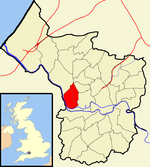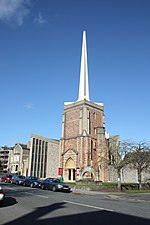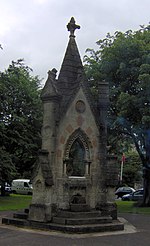Clifton College

Clifton College is a public school (English private boarding and day school for pupils aged 13–18) in the city of Bristol in South West England, founded in 1862. In its early years it was notable (compared with most public schools of the time) for emphasising science rather than classics in the curriculum, and for being less concerned with social elitism, e.g. by admitting day-boys on equal terms and providing a dedicated boarding house for Jewish boys, called Polack's House. Having linked its General Studies classes with Badminton School, it admitted girls to every year group (from pre-prep up to Upper 6th, excepting 5th form due to potential O-levels disruption) in 1987 and was the first of the traditional, boys, public schools to become fully coeducational. Polack's House closed in 2005 but a scholarship fund open to Jewish candidates still exists. Clifton College is one of the original 26 English public schools as defined by the Public Schools Yearbook of 1889. The school was also the headquarters of the US army in Britain during part of the Second World War. General Omar Bradley used the school's buildings as a staff office from October to November 1944.Clifton College is one of the few schools in the UK to have educated several Nobel laureates: Sir John Kendrew, who received the Nobel Prize in Chemistry in 1962; Sir John Hicks, winner of the 1972 Nobel Prize in Economics; and Sir Nevill Francis Mott, who received the Nobel Prize in Physics in 1977.
Excerpt from the Wikipedia article Clifton College (License: CC BY-SA 3.0, Authors, Images).Clifton College
College Road, Bristol Clifton
Geographical coordinates (GPS) Address Phone number Website External links Nearby Places Show on map
Geographical coordinates (GPS)
| Latitude | Longitude |
|---|---|
| N 51.4623 ° | E -2.6204 ° |
Address
Clifton College
College Road 32
BS8 3JH Bristol, Clifton
England, United Kingdom
Open on Google Maps










